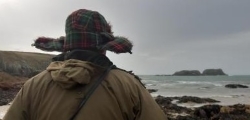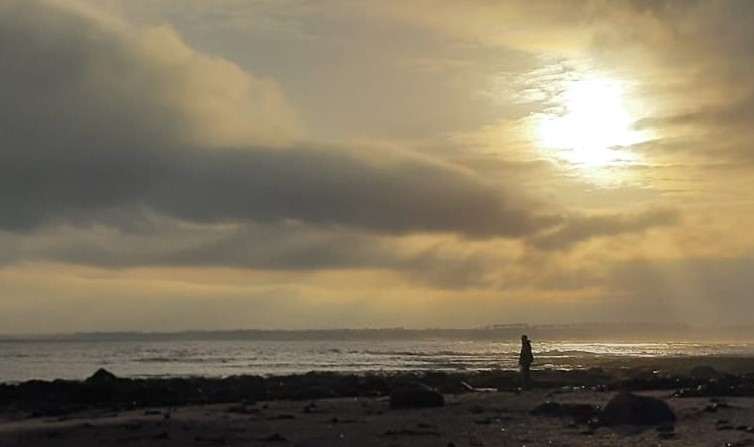
An Interview with William Fagus (2019)
Tell us a bit about your background.
I was born in Stoke on Trent in a working-class family.
I left school at 16, and entered the job market armed with three middling GCSEs. My parents just wanted me to ‘earn my keep’, so any kind of structured career or further education were positively discouraged. Until the age of 40, I did mainly manual work: builder’s labourer, sawyer, carpenter, window cleaner, worked in a DIY shop for a bit.
Then I went to university, where (much to my amazement!) it turned out I had a talent for writing academic essays.
I got a 1st at BA and a Distinction at MA, and finished up with a PhD in Architectural History.
My interests: the craft of writing, walking in wild places, historic buildings (not posh ones), ornithology, traditional carpentry skills, trying to play blues guitar like BB King.
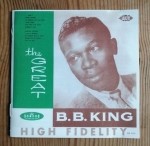
Where did the idea for the Purple-Bellied Parrot come from?
I began writing it so long ago it is hard to remember. I remember being attracted by the name, the Purple-Bellied Parrot, a bird that lives exclusively in small areas of south-east Brazil. I thought what a wonderful, alliterative name it was and how it’d make a great title for a children’s book.
During the stop-start writing process, however, the novel changed, and I realized I was writing something other than children’s book (although there is much for children to enjoy). Most authorities now call the species, humourlessly I think, the Blue-Bellied Parrot.
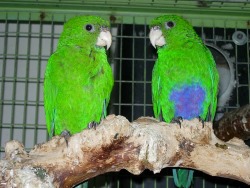
wikipedia.org/wiki/Blue-bellied_parrot
You say the writing process was stop-start. Why, and what made you finish the book?
I started writing it while I was looking for work after my PhD. I was discovering that having a PhD was an impediment to getting a job! I then took a couple of short-term jobs, and so the book was put on hold.
I finally found a permanent job with a government advisory body. It was where I always wanted to work and I thought my expertise and skills would be put to good use. It turned out the most boring and unfulfilling job I’d ever done — and I’ve done some boring and unfulfilling jobs in my life!
I’d been there for a couple of years, and I realised if I didn’t get out I’d go mad. Writing a popular book, hmmm, that might be the answer. It’ll surely bring me fame and fortune... So for the twelve months from late 2017 all my spare time and creative energy went into finishing the book.
The plot contains lots of twists and turns and spans the globe. How did you develop it?
I’ve been a birdwatcher all my adult life. (Please don’t call me a twitcher!) I knew a bit about the illegal wild-bird trade. But all I had in my mind when I began was the bird, the flat where the pink-faced man lived, and that somehow the bird would try to get home. I seem to be different from other writers. I don’t use storyboards or wallcharts or shuffleable ideas cards or anything like that — the occasional post-it note stuck to the screen is about it. I just sit down, sometimes with ideas and sometimes not, and start writing.
My best ideas come to me when I’m writing, and I stop and make a note at the end of the page before I forget. Sometimes an idea for a scene many pages ahead will pop into my mind — that happened with the scene in the African market — and I just have to break off and rough it out. Normally I keep a document open called ‘Ideas’ that I can get at straight away.
Ideas often come to me in the dawn darkness when I’m awake (I’m a poor sleeper), or when I’m out for a walk — sometimes whole episodes or passages of dialogue. Sometimes it’s like I’m about to burst, and I have to leap out of bed or rush home and get it down. It was the same when I was writing up my PhD. Vague ideas would be floating about in my mind, and then they would coalesce.
Your characters are memorable and vivid. Shug, for example, how did you come up with his character?
More than any other aspect of writing I enjoy creating characters. I don’t want to give too much of the plot away, but I needed to solve a plotting problem and I’d read about an albatross in a similar predicament to Shug’s, so I thought he would be an ideal solution. The name I nicked from a character in the 1990s Scottish comedy Rab C. Nesbit. One reader told me that he hated Shug. Result!
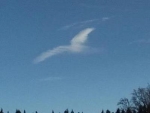
Why did you decide to use footnotes?
Well I suppose it is a swipe at all the academic writing I was tortured by as a student. Also, I’d get all these ideas for jokes, or I’d find nuggets of information which didn’t fit in with the main story, so, why not use footnotes? They also give the book another voice — albeit eccentric. During the final edit I thought they might distract from the story and I agonized about taking them all out. But I’m glad I didn’t because most readers love them.
Much of the book takes the form of a journey ‘The Trip’, and the reader experiences this from a birds-eye point of view. How did you manage to convey this successfully?
A combination of imagination and research. I’ve never been to the Pyrenees, Extremadura, Tangier, Nouadhibou in Mauretania — let alone the St Peter and St Paul archipelago in the Atlantic, so I traced their journey through western Europe and down the west coast of Africa via satellite imagery on google maps and streetview. I had my own bird’s-eye view of the landscape.
Tell us a little more about your writing process.
Well, like I said I generally just start writing. I might have some concrete ideas in my head; I might not, but I’ll sit down and see what and who turns up. It’s a process of discovery for me as well as for the reader.
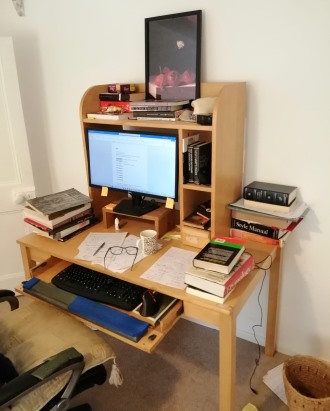
What about writer’s block?
I can usually write something, and if I really get stuck, I’ll go out for a walk or saw a piece of wood or something. To anyone who has writer’s block I’d say just sit down and start writing — anything. Even unpunctuated stream of consciousness stuff is good. I’m not saying I find writing easy. I have a lazy brain and sometimes I’ll do anything to put off the moment — hoover the crumbs out of the keyboard, wash the dishes, rinse out the recycling, play my guitar. Sometimes fear prevents me from beginning: that I might have ‘lost it’, and I won’t be able to write anything any good. I start each session by editing the previous day’s work, and that seems to warm up the brain. But, because I enjoy the editing process, this too can become procrastination.
Did you use a professional editor for The Purple-Bellied Parrot?
No. I know all the how-to books tell you to use one because it is virtually impossible to see the flaws in your own work, but I didn’t. (I couldn't afford it!) I think I am a reasonably good editor. When I was at university fellow students asked me to look at their work, and now friends ask me to cast an eye over any important documents they are unsure of. I have edited a number of documents on a professional basis.
The process with my own writing is: after that initial next-day edit I leave the text alone to stew. I don’t look at it for as long as possible, a good fortnight at the very least – the longer the better. Then, when I return to edit, I can look at it with fresh eyes and see the mistakes and crap writing.
I did ask a friend to carry out the final proofread. Because you have lived with the book for so long, it is impossible to spot every typo, like trying to spot mistakes in a painting when viewing it two inches from your nose. For the eagle-eyed there are still a few typos in The Purple-Bellied Parrot. In my defence, I recently read Chandler’s Farewell my Lovely, a book re-published in many editions, and there were a couple of typos in that!
What do you mean by crap writing?
If you want to insult me just tell me The Purple-Bellied Parrot is overwritten. I can’t stand overwriting (I’ve done it myself!). It might be long descriptions of people and places peripheral to the story; descriptions of the familiar without adding anything new, adverb cloggage; treating the reader like an idiot by leaving nothing to the imagination; telling us constantly how a character is feeling, or writing every miniscule event in a scene. A mundane example, I recently read something like:
‘He drove home. He parked the car and walked across the carpark, unlocked the door to his house, pushed it open and turned on the light.’
Start the scene in the house, please. We can work out the rest.
The writer’s job is to transfer the thoughts in their brain into the reader’s brain via symbols on a piece of paper, and I want to do this as economically as possible. I begin an editing session by asking myself, ‘Now, what can I cut out?’
Another bugbear is lazy writing. I recently read an award-winning novel in which the author, without irony, described a character as having ‘chiselled’ features. Okay, we have to resort to cliché sometimes, but come on — make an effort!
Something I believe 75% of the time: Writing is like a football referee. If it does its job well, you don’t notice it.
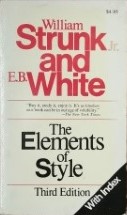
Aren’t you over-emphasizing the importance of ‘good’ writing? What most readers want is a good story. If it’s a good story then they don’t notice or care if has too many adverbs or clichés or descriptions of the weather.
Agreed. I describe the weather a lot! You can get away with quite a bit if the basic story is a cracker and its structure is ok. Many millionaire authors prove that, and I’m sure they would find my meagre bank balance hysterical.
Do you ever write in longhand?
Rarely. If I am away from a computer and I get a good idea I might scribble something down. I once wrote out a whole scene from The Purple-Bellied Parrot, but it was a real pain in the backside to type up.
Who are your favourite novelists?
Truth be told, I don’t read enough novels. Actually, I don’t finish enough novels. I started four recently — all highly acclaimed — and only finished one. I always give them a chance, around eighty pages or so. But I’ll toss them aside and think, I don’t get it.
I don’t like humourless books.
There are writers whose craft I admire. Annie Proulx, especially The Shipping News and Close Range. Steinbeck, Ian McEwan — Atonement is one of only two books to make me cry. Elmore Leonard for his get-the-job-done economy; Kate Atkinson for her storytelling (although the ending to A God in Ruins drove me round the bend! A real clingfilm-over-the-toilet-bowl moment), Jerome K Jerome. Three Men in a Boat is probably the first novel that made me laugh out loud. Joseph O’Connor is a skilled writer, but I don’t like all his novels. One of my favourite books is Thomas Berger’s Little Big Man, a masterclass in character creation, but overlong by a couple of chapters. I think most novels are too long.
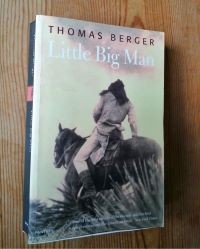
Crikey! (as Chalkie in The Purple-Bellied Parrot might say) I’ve just realized most of those are male. I’ve just started The Beginning of Spring by Penelope Fitzgerald, so I’ll see how I get on with that.
(Update: I managed to finish it, but thought it overrated!
I recently read Foster by Claire Keegan, and for once all the hype was true.)
Influence for The Purple-Bellied Parrot, was more cinematic than literary. The Ladykillers (1955 version), Curse of the Were-Rabbit, Jaws (obviously), even Tom and Jerry. You’ll also spot references to the Rocky films, The Shawshank Redemption, Dambusters and even Full Metal Jacket.
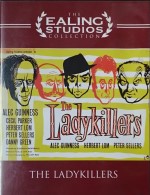

Is there anything about The Purple-Bellied Parrot you are unhappy with?
Yes! Where to begin...
Apart from a vague idea at the outset that it was going to be a children’s book — which it turned out not to be — I never had a target reader in my mind. My blurb says ‘suitable for readers 11-100 years old,’ and it is. But by trying the scattergun approach maybe I alienate readers. Is it too adult for younger readers and too young for adult readers? I also worry about the title. Will teenagers want to read about what they think are the adventures of some silly parrot, and will some adults? Anyway, the toothpaste is out of the tube now.
Update three-years later: I find parts of it overwritten!
William Fagus is a pseudonym.
